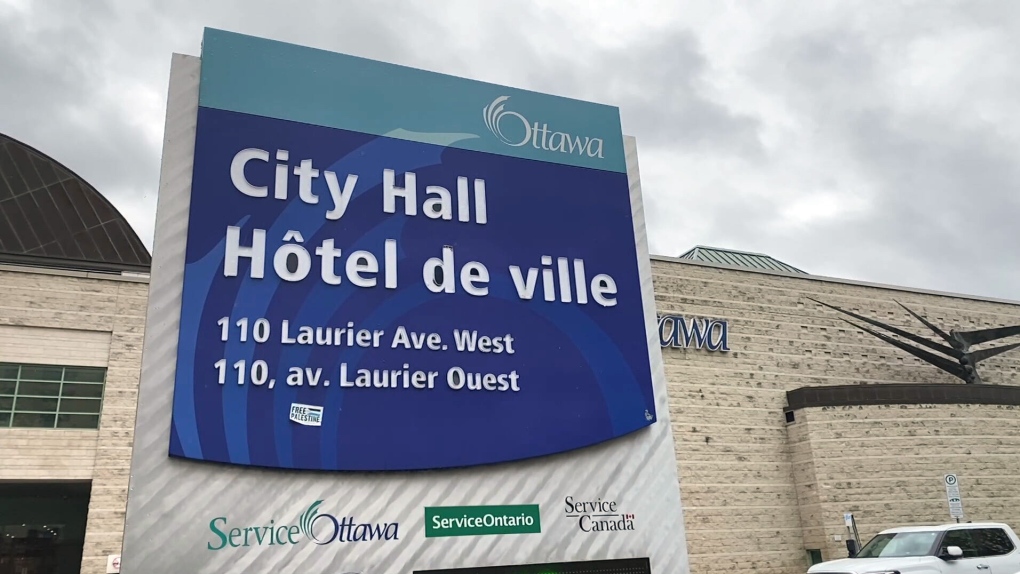
OC Transpo is looking at five scenarios to address a potential $130 million to $150 million deficit a year over the next five years, if the federal and provincial governments do not provide new funding to support the transit service.
One month after Mayor Mark Sutcliffe launched his ‘Fairness for Ottawa” campaign to advocate for the city’s “fair share” of funding, city staff provided a bleak outlook to council on the state of Ottawa’s finances heading into the 2025 budget debate. Sutcliffe is calling for $140 million a year over the next three years from the Ontario and federal governments to support transit.
The presentation to council on Wednesday shows OC Transpo is projecting a $120 million funding shortfall in 2025, $131 million in 2026, $145 million in 2027 and deficits of $150 million in 2028 and 2029.
Transit Services general manager Renee Amilcar told councillors that if the city doesn’t receive funding support from the upper levels of government, there are five options being considered.
“Everything is on the table,” Amilcar said, refusing to discuss what the options will be.
“We will present some scenarios and we will make the decision we will share with council. When we receive the budget direction, we will know what to do with those scenarios.”
Amilcar says the transit service is waiting for councillors to finalize the 2025 budget directions later this month, and will begin drafting the budget.
Amilcar says staff are looking at ways to generate revenue, with park and rides “on the radar.”
“We are doing our diligence as well,” Amilcar said, adding the transit service will “see how we can bring money on the table for transit.”
OC Transpo is facing a $25.6 million budget shortfall in 2024, mainly due to lower ridership on buses and the O-Train. Councillors were told the long-range financial plan for OC Transpo shows there is an $8.9 billion funding gap in transit between 2023 and 2048.
“The situation we are in is the equivalent of buying a new house based on a salary that you expected to earn and a mortgage you could afford and then losing your job, living on a reduced income and at the same time, interest rates go up,” Isabelle Jasmin, Deputy City Treasurer, told councillors.
“We built LRT thinking ridership would increase, but instead a pandemic hit, ridership dropped and the cost of construction and operating went up.”
City Manager Wendy Stephanson added, “The last four years have been particularly challenging. Ottawa has been disproportionately affected, particularly with respect to our transit ridership. It hasn’t fully recovered.”
Staff told councillors the long-range financial plan for Stage 1 and 2 of LRT in 2023 estimated 112 million rides in 2023, but ridership was only 57 per cent of “affordable level” last year at 64 million.
Sutcliffe said in August that if the federal and provincial governments don’t come through with support, the transit levy would need to increase 37 per cent, equalling a seven per cent increase in property taxes each year.
The mayor’s ‘Fairness for Ottawa” campaign is also seeking $100 million from the federal government for payments in lieu of taxes over the past five years and a funding commitment moving forward.
“We haven’t seen any help come our way to help deal with this,” Stephanson told councillors.
When it comes to the payments in lieu of taxes (PILT), staff say there has been a $99.2 million shortfall over the past five years related to federal and NCC properties in Ottawa. The city is estimating a funding shortfall of $252 million to $445 million over the next 10 years unless the federal government changes the PILT formula.
Part of the funding shortfall is linked to a reduction in the business education tax rate by Ontario, which provided relief to businesses during the COVID-19 pandemic. Staff estimate the reduction in the business education rate will be $110 million to $140 million over the next 10 years.
The city provided a breakdown on the payment in lieu of taxes shortfalls from the federal government over the next 10 years:
- Business Education Rate reduction – $110 million to $140 million
- Reduction of federal property inventory – $20 million to $90 million
- State and condition valuation issues – $45 million to $90 million
- Prolonged Renovation Valuation Issues – $45 million to $75 million
- Self-Imposed Tax Exemptions by the federal government – $30 million to $45 million
- National Capital Commission Tenants – $2 million to $5 million.
The city wants a 10-year commitment on PILTs related to the reduction of federal property inventory as the federal government looks to reduce its office footprint.
The federal government paid the City of Ottawa $119.6 million in 2022, $114.6 million in 2021, $124.4 million in 2020 and $122.7 million in 2019.
Stephanson says staff have met with federal government officials to discuss PILTS, with the city presenting some potential solutions.
“There was no movement to rectify the issue or find a solution that worked for everybody,” Stephanson said.
The city manager told council that $153.5 million in savings have been identified through service reviews, efficiencies and continuing improvements to city services in 2023 and 2024. The efficiencies include $72.2 million in transit services, $21 million in service reviews, including $10 million through bus route optimization, and $2.6 million through the Ottawa Police Service.
Council will finalize the 2025 budget later this year.
Other major cities in Canada passed much more significant tax hikes for their 2024 budgets. Toronto’s rate went up 9.5 per cent, Edmonton approved an 8.9 per cent increase, Calgary saw its taxes go up 7.8 per cent, and Vancouver’s tax rate increased by 7.5 per cent.